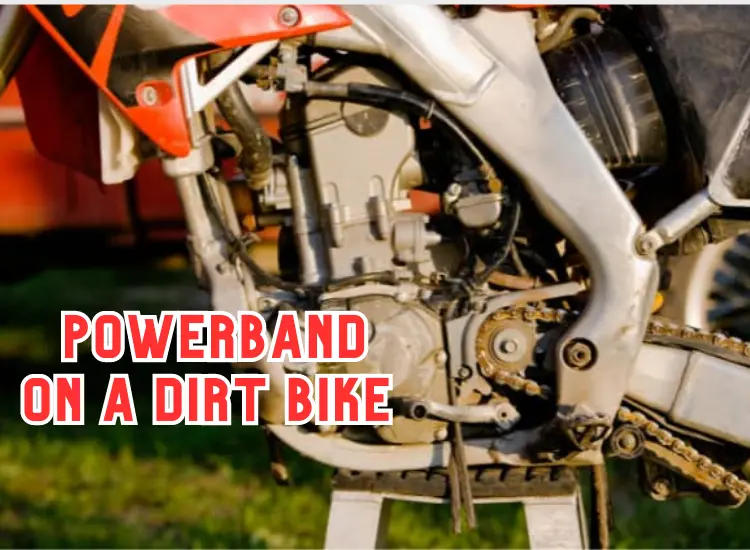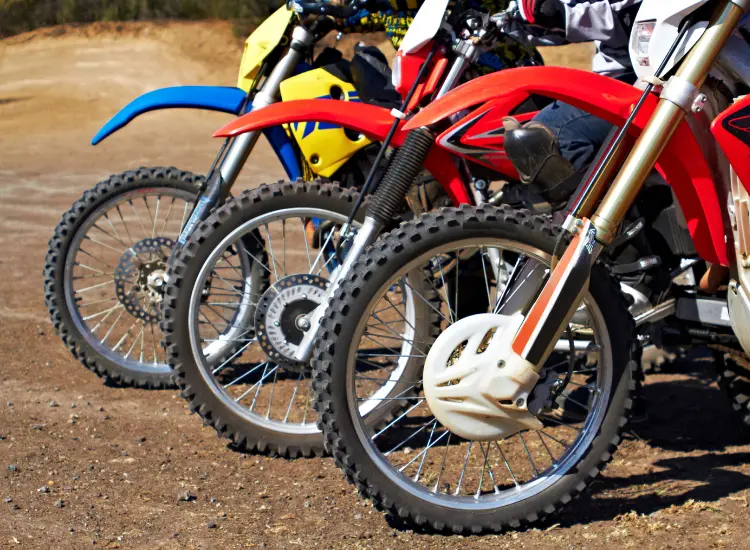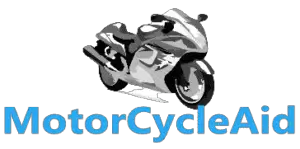In most dirt bikes, the powerband typically begins at a certain RPM and extends to the engine’s maximum RPM limit. Within this range, the engine’s design, camshaft profile, intake, and exhaust systems work together to deliver a significant surge of power, making the bike feel more responsive and powerful.
What is a Powerband on a Dirt Bike?
What is a Power Band in a Dirt Bike?
A powerband refers to a specific range of engine RPM (revolutions per minute) where the engine produces its highest level of power and torque. It’s essentially the sweet spot in the engine’s RPM range where the bike’s performance is at its peak
Powerband on a Dirt Bike Location
The powerband’s location and width vary depending on the engine’s design and intended purpose. For example, some dirt bikes have a more aggressive and narrow powerband suited for high-speed performance, while others may have a broader powerband designed for low-end torque and better off-road traction.
Powerband in a Dirt Bike Characteristics
Riders need to be familiar with their dirt bike’s powerband characteristics to optimize their performance, especially during off-road riding or motocross events, where managing power delivery is crucial for maintaining control and achieving the best possible performance on different terrains and obstacles.

Do Four-Stroke Bikes Have a powerband?
Yes, four-stroke bikes do have a powerband, although it operates differently compared to two-stroke bikes. As mentioned earlier, a powerband refers to a specific range of engine RPM where the engine produces its highest level of power and torque.
Powerband on a two-stroke engine Dirt Bike
In a two-stroke engine, the powerband is typically more pronounced and abrupt because the combustion cycle occurs every other stroke of the piston. This results in a more immediate and noticeable surge of power within a narrower RPM range.
Do 4 Stroke Dirt Bikes have Power Bands?
On the other hand, four-stroke engines have a smoother and more linear power delivery. The powerband in a four-stroke bike is still present, but it is generally broader and less dramatic compared to two-strokes. The design and engineering of four-stroke engines allow them to produce a more constant and predictable flow of power across a wider RPM range.
Due to this difference in power delivery, riding a four-stroke bike may feel more manageable and controllable, particularly for beginners and off-road riding where consistent power is often favored over sudden bursts of power. However, the specific characteristics of the powerband in a four-stroke bike can still vary depending on factors like engine displacement, tuning, and intended use of the motorcycle.

Should I Stay in the Powerband?
Yes, staying in the powerband is generally recommended for optimal performance and control of your dirt bike or motorcycle.
As mentioned earlier, the powerband is the range of engine RPM where your bike’s engine produces its highest level of power and torque. When you’re within the powerband, the engine is operating at its most efficient and responsive state, providing you with better acceleration and performance.
Staying in the powerband is particularly important when riding off-road, on challenging terrains, or during motocross events, where you may encounter various obstacles and require quick bursts of power to overcome them. By keeping your engine RPM within the powerband, you can access immediate power when needed, making it easier to navigate through difficult sections and maintain control over the bike.
For two-stroke bikes with a more pronounced powerband, staying within that narrow RPM range is crucial to ensure you have enough power at your disposal. On the other hand, four-stroke bikes have a broader powerband, allowing for a more forgiving power delivery, but it’s still beneficial to operate within this range for better overall performance.
However, there are certain situations where you might intentionally operate outside the powerband. For instance, when cruising at a constant speed on open roads, you might prefer to keep the engine at lower RPMs to conserve fuel and reduce engine wear. Additionally, during slow-speed maneuvers or technical sections, you may intentionally modulate the throttle to keep the engine in a lower RPM range for better control.
In conclusion, while there are specific situations where you might operate outside the powerband, for most off-road riding and performance-oriented scenarios, it’s best to stay within the powerband to maximize your dirt bike’s capabilities and have a more enjoyable riding experience.

How to Maximize Your Powerband in a Dirt Bike?
Maximizing your powerband involves techniques and strategies to effectively utilize the engine’s power and keep it operating within its optimal RPM range. Here are some tips to help you achieve this:
Smooth and precise throttle control is essential to keep the engine within the powerband. Gradually and progressively apply throttle as you accelerate, especially when coming out of corners or navigating rough terrain. Avoid abrupt throttle inputs, as they can cause the engine to surge out of the powerband or lead to wheel spin.
Choosing the right gear is crucial for staying in the powerband. Upshift or downshift at appropriate moments to keep the engine in the range where it produces the most power. In general, higher gears are used for higher speeds and open sections, while lower gears provide more torque for technical sections and obstacles.
Anticipate changes in the terrain ahead to prepare for the right gear and throttle adjustments. Be ready to downshift before entering steep inclines or difficult sections, ensuring you have enough power to tackle the challenges.
Maintain a proper riding position to improve control and weight distribution. This helps keep the bike stable and balanced, allowing you to effectively manage the power delivery and respond to changes in the terrain.
Regularly service and maintain your dirt bike’s engine to ensure it is running optimally. Clean or replace air filters, change engine oil, and perform routine inspections to keep the engine in top condition, which directly impacts the powerband’s performance.
If your dirt bike has a carburetor, ensure the jetting is properly adjusted to match the prevailing weather conditions and altitude. Proper jetting ensures the engine receives the correct air-fuel mixture, which contributes to a smoother and more responsive powerband.
Becoming familiar with your dirt bike and its powerband characteristics requires practice. Spend time riding in different environments and terrains to develop a feel for when the powerband kicks in and how to use it to your advantage.
In some cases, upgrading the exhaust and intake systems can enhance the powerband’s performance. However, be sure to research and choose modifications that are compatible with your bike’s make and model.

Conclusion
the powerband is a critical aspect of a dirt bike’s performance, representing the range of engine RPM where it produces its highest level of power and torque. To maximize your powerband and make the most of your dirt bike’s capabilities, consider the following:
By applying these strategies and techniques, you can optimize your dirt bike’s power delivery and have a more enjoyable and responsive riding experience. Always prioritize safety, wear appropriate protective gear, and respect local regulations and trail etiquettes when riding. Regular maintenance and a deep understanding of your bike’s characteristics will help you make the most out of its powerband and explore the full potential of your off-road adventures.

